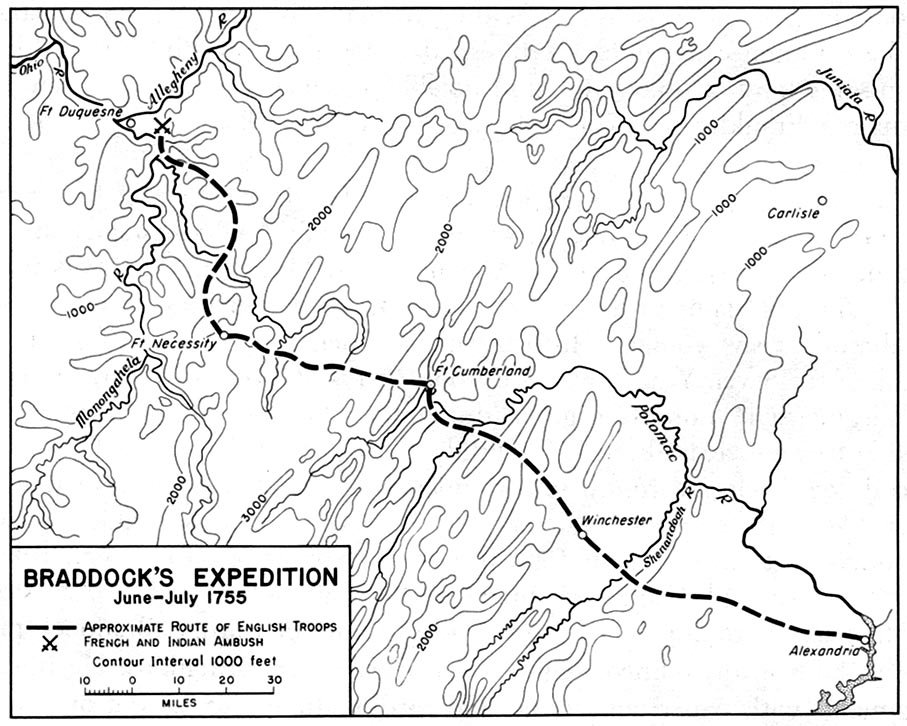What possibly could the tattooed mayor of a small rustbelt town, a subway station in an urbanized corridor and the towering historical legacy of George Washington all have in common? If you guessed a failed 1755 British military expedition then you would be correct. I imagine many of you probably guessed wrong.
Twelve Mile Circle is often about strange threads running between and through geography and history. However, I have to admit that this may be one of the more improbable connections I’ve stumbled upon. In a sense it’s three completely different stories. They all just happen to share a single thread.
Mayor John Fetterman

Let’s start with John Fetterman who was elected mayor of Braddock, Pennsylvania in 2005. Braddock, a suburb of Pittsburgh, is an interesting case study (map). Here, a location became so intertwined with a single industry that it could not function without it.
Andrew Carnegie built his first steel mill in Braddock 1873 (and his first library) and the town grew around it. More than thirty thousand people lived here by the 1950’s. Unfortunately today the population reflects barely 10% of that former total. It dropped like a rock with the precipitous decline of the Pennsylvania steel industry.
Mayor Fetterman came to Braddock as part of AmeriCorps. This organization functions similarly to the Peace Corps but with a focus on improving disadvantaged areas within the United States. Then he decided to remain in town after he completed his AmeriCorps service. The mayor pursues revitalization initiatives under the banner, “destruction breeds creation” and his commitment leads him to tattoo his body with the dates of each murder committed in Braddock during his watch.
But don’t be fooled by appearances. Mayor Fetterman has a master’s degree in public administration from Harvard. The town is making progress as it reinvents itself.
The Subway Station
Go ahead and drill into this Street View image of an elevated subway station on the Metro system in Alexandria, Virginia. Just press the little plus (+) sign in the corner. Notice the writing on the pylon. This is the Braddock Road station (map). Hmm… Braddock, Pennsylvania… Braddock Road. Indeed, the connection begins to reveal itself.
Braddock Road is a well-known residential and commuter thoroughfare through Northern Virginia. It begins here at the Metro subway station on the western edge of “Old Town” Alexandria. Then it stretches in various non-contiguous segments through the heart of suburbia, terminating not too far away from Dulles International Airport.
The Expedition
Notice the course of the Braddock expedition, starting in Alexandria, Virginia. Follow along until it terminates just outside of Fort Duquesne, at present-day Pittsburgh. The two “Braddocks” represent the beginning and the end of a major military incursion.

General Edward Braddock served as the commander-in-chief for all British troops in the American colonies. Subsequently, Britain and France clashed over territory as they built their respective empires. In the colonies they called this the French and Indian War while elsewhere it was known more widely known as the Seven Years’ War. Fort Duquesne belonged to France, and by extension, they controlled a gateway to the Ohio Country. In other words, France controlled a large swath of the continental interior.
The Expedition Underway
General Braddock and his troops left Alexandria and set out first for Cumberland, Maryland. Many people believed he used Braddock Road as he traveled through Northern Virginia, and the pathway became so synonymous with him that it took his name. I remember as a child hearing a legend about General Braddock. Supposedly he buried two cannon barrels filled with gold coins somewhere along the route in the vicinity of Centreville. The story explains that his troops became mired in mud and muck and had to lighten their load before proceeding further. Thoughts of buried treasure filled my childhood dreams. Sadly the legend has been thoroughly debunked.
In fact, the historical record seems to indicate that the expeditionary force didn’t take Braddock Road at all. Rather, they almost certainly took the Middle Turnpike. The modern Route 7 largely follows the path of the old turnpike as it runs through Tyson’s Corner and Leesburg on its way to Winchester. The road named for General Braddock today is the wrong one.
Meeting the Enemy
From Cumberland, the expeditionary force of more than two thousand men headed towards Fort Duquesne, expecting to capture it easily. However, French forces with Native American allies attacked the British troops ten miles short of the destination at the Battle of the Monongahela. It turned into a massacre and a route. General Braddock suffered a gunshot wound during the battle and died during the retreat. This is considered one of the greatest British military debacles of the colonial era.
One of the few bright lights was the General’s young aide-de-camp. He managed to form a rear guard long enough to allow the retreating British forces to disengaged in a somewhat orderly manner. He was hailed as a hero and would go onto bigger things later in the century. His name was George Washington.

Leave a Reply